Module 5: Management and Prevention of Disease Outbreaks
Create the Clean Break
The cornerstone for stopping further spread of infection is creation of a clean break. This is defined as protection of unexposed animals and new arrivals from exposed or infected animals by housing them in a segregated area. As housing choices for “clean” animals are likely limited due to need for isolation and quarantine space, the key for creating a clean break is implementation of intake diversion strategies to stop or reduce the admission of new animals.
Housing Options for New Admissions
- Best option: no admission of new animals
- Better option: separate building for new admissions
- Good option: separate ward for new admissions
- Not a good option: one end of the ward where quarantined animals are housed
Ideally, no new animals should be admitted until the disease outbreak is resolved. This is feasible for private, nonprofit shelters with controlled admissions.
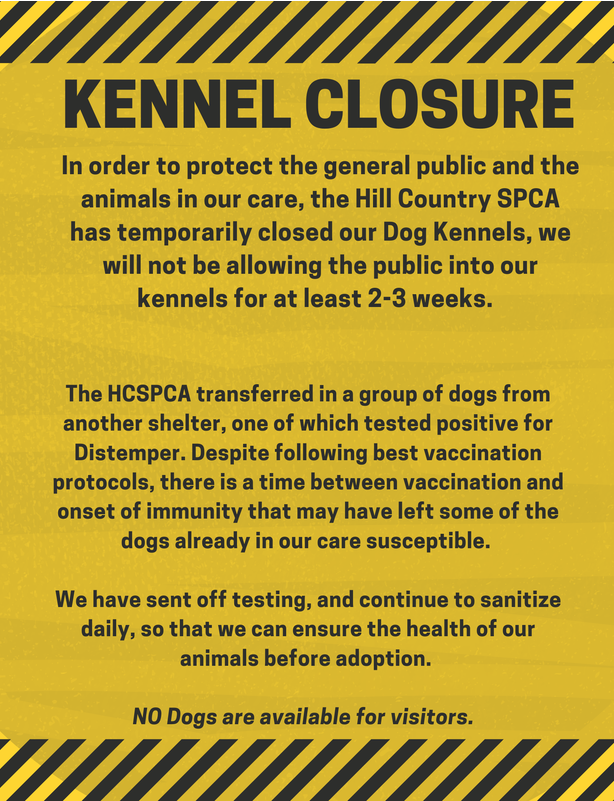
This is not feasible for municipal shelters with animal control contracts requiring admission of sick and injured animals, animals for rabies quarantine, dangerous animals, and animals from cruelty investigations. While municipal shelters must admit animals in these categories, they can temporarily discontinue admission of owned pets, transfers from other shelters, and bringing in healthy free-roaming animals that are not a public safety threat. The pet owners and finders of healthy stray animals can be diverted to other groups or shelters, or asked to keep the animals until the outbreak is resolved. During this time, these animals can be vaccinated to establish immunity to CDV, CPV, and FPV while awaiting surrender to the shelter. New admissions can also be moved directly into foster homes.
Intake diversion strategies for municipal shelters:
- Temporarily stop intake of surrendered pets.
- Restrict intake to minimum legal requirement (injured or ill strays, rabies quarantine, dangerous dogs, cruelty cases).
- Discontinue picking up healthy free-roaming animals that are not a public threat.
- Have animal control officers try to reunite free-roaming animals with owners first instead of bringing them directly into the shelter. Studies have shown that many free-roaming dogs in neighborhoods are actually within a mile of their home. Free-roaming cats may be owned pets that are allowed outdoors at certain times of the day or lost cats. In both cases, the cats are likely to find their way back home if left alone.
Here are other innovative solutions municipal shelters have used for creating clean break housing to protect new animals from exposure:
- Partner with other shelters that agree to receive new admissions pending resolution of the outbreak.
- Arrange for temporary off-site housing such as empty commercial warehouses for new admissions.
- Utilize housing resources provided by local or national emergency/disaster response groups. These groups have mobile tractor trailers or tents containing temporary housing units and even provide staffing to assist with care of the animals.
In conjunction with intake diversion, population management strategies should focus on moving the “clean” animals out of the shelter as quickly as possible to keep the shelter from getting crowded. Litters of puppies and kittens should be placed for adoption or transferred to rescue groups and foster homes immediately at intake to reduce the number of vulnerable animals on-site.
Camp McConnell (Florida)

In January 2020, Alachua County Animal Services experienced a respiratory disease outbreak in their dog population caused by canine pneumovirus. Sick dogs were moved to an isolation room and dogs in all other housing areas were quarantined. The shelter discontinued dog adoptions and admission of owner surrender and stray dogs. A vacant county-owned YMCA camp (Camp McConnell) was secured for housing new stray dogs. To minimize intake at this site, Animal Control Officers tried to reunite roaming dogs in the field with their owner. Finders of healthy friendly stray dogs were requested to notify the shelter and keep the dogs for a few days until space at Camp McConnell was available. Shelter staff assigned to the Camp did not travel back and forth from the main shelter to avoid the possibility of fomite spread of pneumovirus to the Camp dogs. With assistance from UF vet students, the shelter hosted a “Clear the Camp” free adoption event at Camp McConnell.
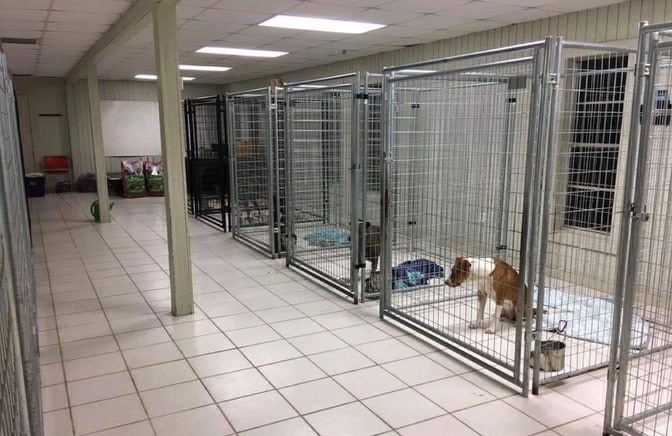
Philadelphia
In May 2019, the Animal Care and Control Team of Philadelphia (ACCT Philly) had a pneumovirus outbreak impacting 250 dogs housed in the shelter. The shelter had just one very large room for dog housing and no physically enclosed isolation space. In consultation with the UF Maddie’s Shelter Medicine Program, the decision was made to keep all exposed and sick dogs in the one housing area as a hybrid isolation/quarantine area. Even though they are a municipal shelter with animal control responsibilities, the shelter stopped admissions of dogs into the building to create a clean break. The Pennsylvania SPCA stepped up to assist by taking in owner surrender and stray dogs pending resolution of the disease outbreak at ACCT Philly. In addition, fully enclosed and air-conditioned tents were set up in the ACCT Philly parking lot to house additional stray dogs and dogs on rabies quarantine.

Read the media report for more details about the disease outbreak response.
Garland (Texas)
Garland Animal Services in Texas experienced a canine distemper outbreak in August 2018. Of the 124 dogs in the kennel, 33 tested positive for CDV. Six of the infected dogs were euthanized due to disease severity and the others were placed in foster homes and a local veterinary clinic for treatment. The remaining exposed dogs were quarantined in the shelter. To create a clean break, a temporary shelter for new admissions was set up inside of a covered garage where the city keeps its stockpiles of coating for icy roads.
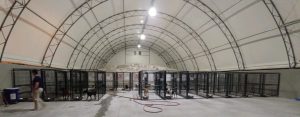
Citrus County (Florida)
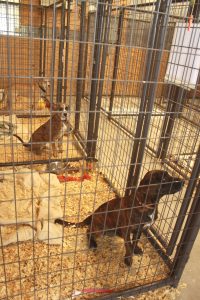
Citrus County Animal Services in Florida managed a canine pneumovirus outbreak in June and July 2019. Sick dogs were moved to an isolation room and exposed dogs were quarantined in the remaining kennels. A clean break was created by putting portable walk-in kennels in an air-conditioned storage garage on the shelter property for housing “must admit” stray dogs. During this time, the shelter had to admit 20 dogs seized for a cruelty investigation. Because of the need for strict security for legal cases, the seized dogs were housed in the storage garage and the stray dogs were re-located to an abandoned fire station that became the new housing site for stray dog admissions. Stray dog care at the fire station was provided by volunteers that also organized adoptions and owner reclaims at this location for weeks while the shelter was closed.
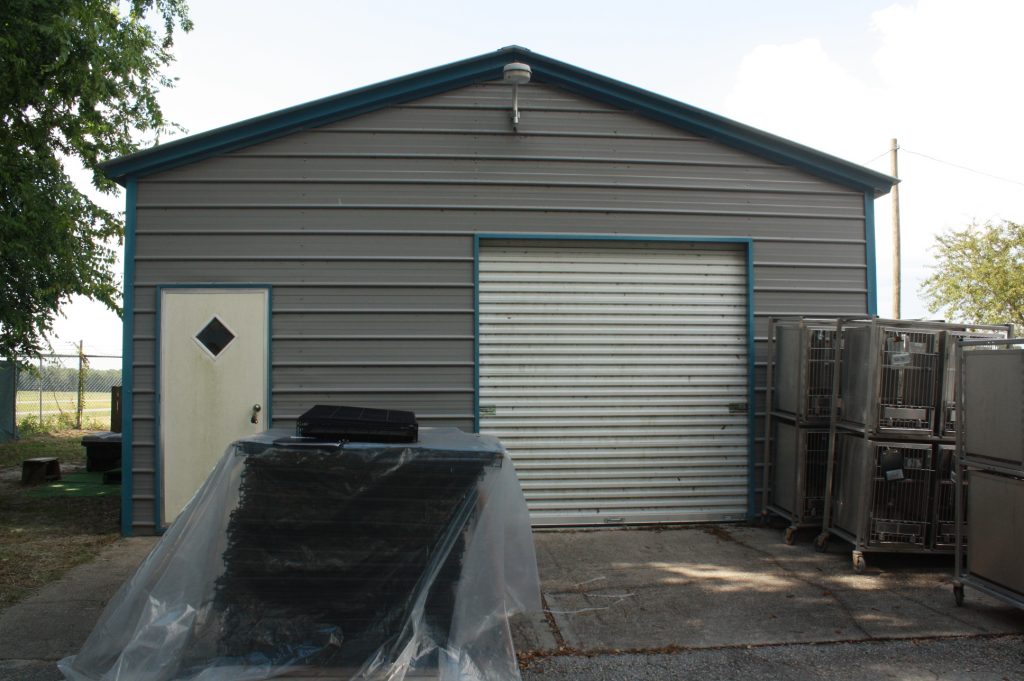
New York City
In December 2016, the New York City Animal Care and Control shelter in Manhattan in conjunction with the New York City Department of Health reported that a novel avian influenza virus (subtype H7N2) was the cause of an unusual respiratory disease outbreak in their cats. This was the first ever report of an avian influenza virus infection in cats in the US. PCR testing of oropharyngeal swabs identified more than 100 infected cats, and while most of the infected cats had a mild respiratory illness, one cat developed severe pneumonia and was euthanized. Further testing identified infected cats in the NYC ACC shelters in 2 other boroughs that had received cats from the Manhattan shelter. At this point, all 5 NYC ACC shelters stopped cat adoptions, cat admissions, and movement of cats between the shelters. More than 500 infected or exposed cats were transferred from the 5 shelters to a temporary shelter established by the ASPCA in a vacant commercial warehouse in Queens. Sick cats were housed individually in a closed off section of the warehouse while exposed cats were housed in groups in large kennels created with wire panels. Housing in groups provided socialization and stress reduction for the cats. The offsite housing for sick and exposed cats created a clean break where the 5 shelters could re-open and resume admission of new cats. The temporary shelter closed down in March 2017 when PCR testing of swabs from the quarantined cats indicated that viral shedding and transmission had ended.
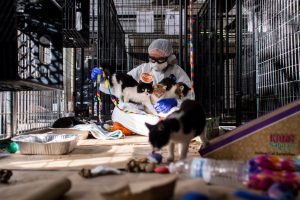
When is the Disease Outbreak Over?
By convention, a disease outbreak is declared over when a period of twice the incubation period of the pathogen has elapsed without identification of any new cases. However, for pathogens with short incubation periods of ≤1 week, a period of 3X the incubation period may be safer, but even an extra week can be a hardship for most shelters.

